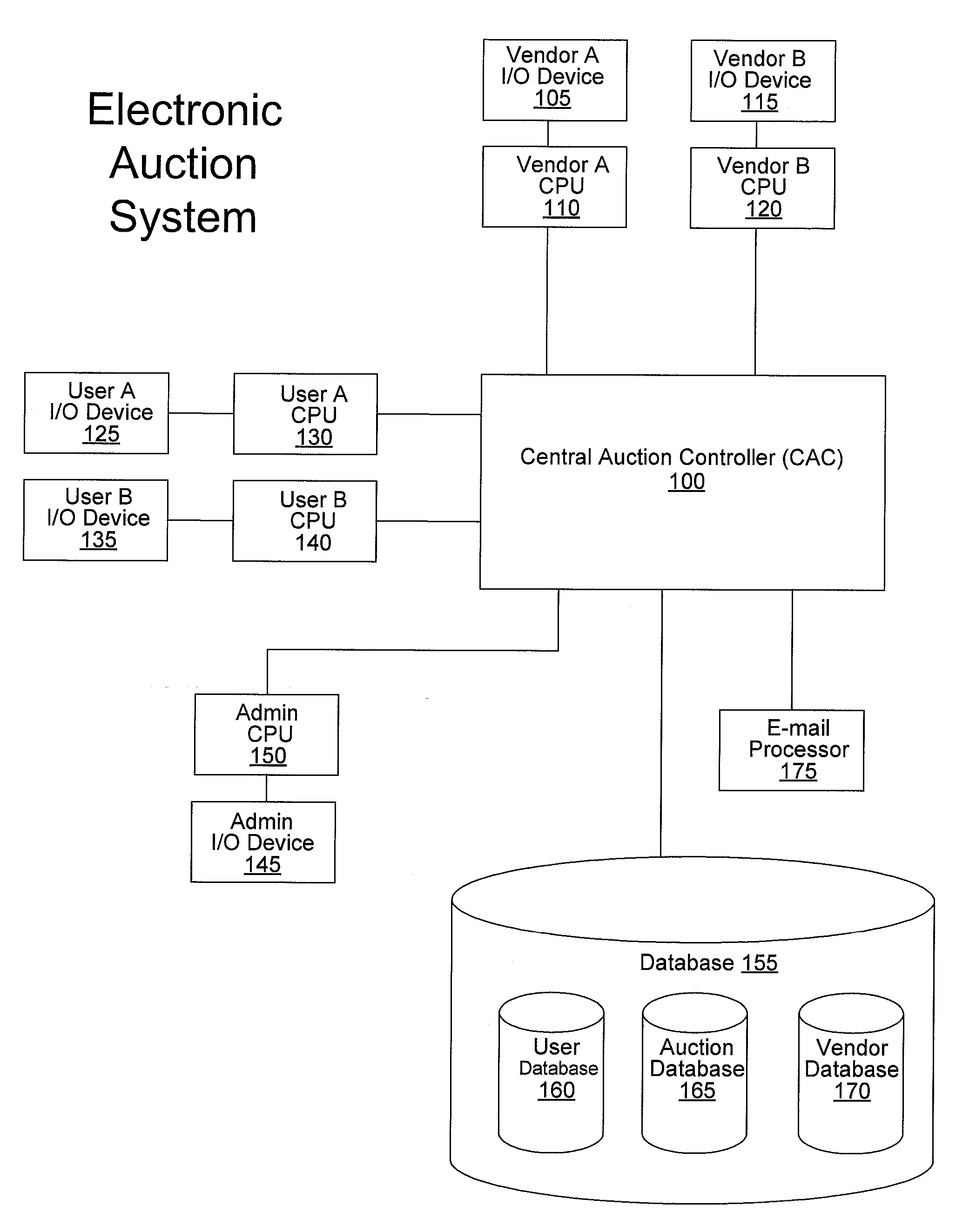Internet Auction System
an auction system and auction technology, applied in the field of automated auctions, can solve the problems of limited standard auction practice in some respects, user may not be able to utilize two mutually exclusive items, and may not maximize the revenue of the seller, so as to maximize the returns of such items, increase the probability of any one item, and effectively bid on a large number of items
- Summary
- Abstract
- Description
- Claims
- Application Information
AI Technical Summary
Benefits of technology
Problems solved by technology
Method used
Image
Examples
Embodiment Construction
[0071] A detailed explanation of the preferred embodiments is now provided as illustrated in the drawings and discussed herein.
[0072]FIG. 1 shows a preferred system 10 for the auction of mutually exclusive items. As described herein, while a preferred embodiment uses a particular tee time at a particular golf course as the “item” for auction, it will be understood that the term is intended in its broadest sense, and the invention is not limited in this respect. Thus, an “item” can refer to any number of tangible articles and intangible properties, or to a right of access or use to a particular facility (such as a travel seat, hotel room, restaurant seat, concert seat, etc.) Moreover, the term “mutually exclusive” in this regard is meant from the perspective that a would-be purchaser is perhaps only interested in owning one of the items (i.e., such as only one tee time on a particular day) even if he / she bids on more than one item at a time, and / or that it is not possible to own mor...
PUM
 Login to View More
Login to View More Abstract
Description
Claims
Application Information
 Login to View More
Login to View More - R&D
- Intellectual Property
- Life Sciences
- Materials
- Tech Scout
- Unparalleled Data Quality
- Higher Quality Content
- 60% Fewer Hallucinations
Browse by: Latest US Patents, China's latest patents, Technical Efficacy Thesaurus, Application Domain, Technology Topic, Popular Technical Reports.
© 2025 PatSnap. All rights reserved.Legal|Privacy policy|Modern Slavery Act Transparency Statement|Sitemap|About US| Contact US: help@patsnap.com



